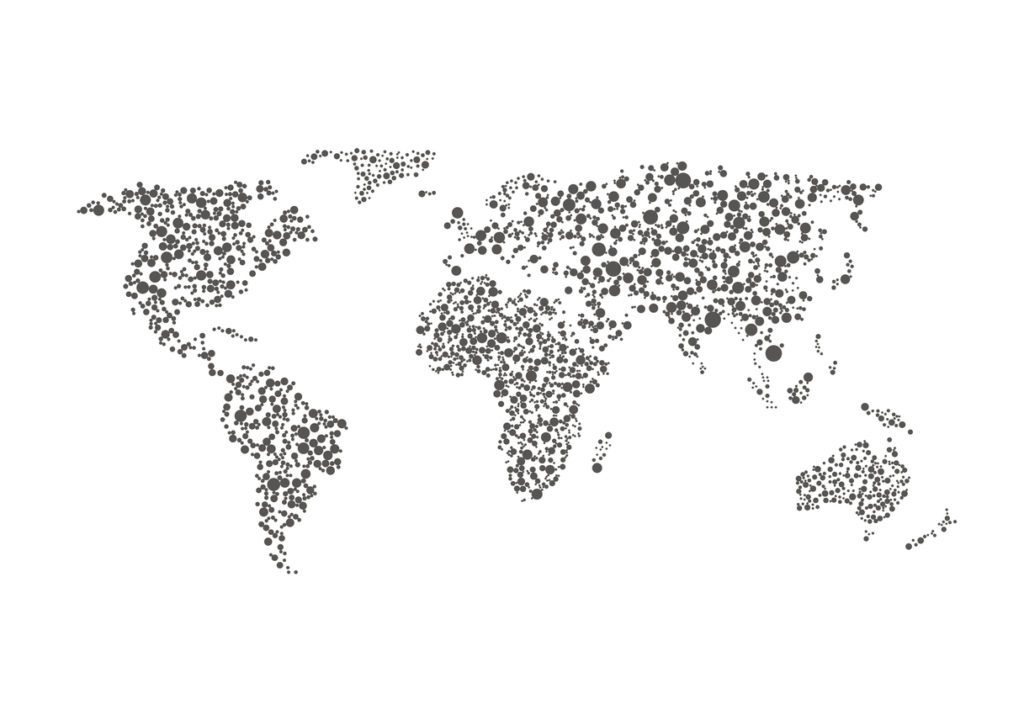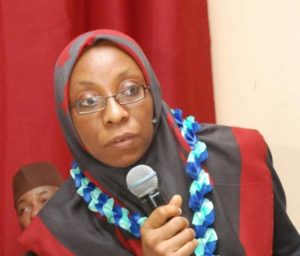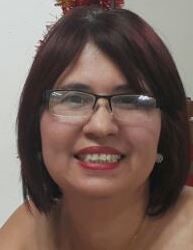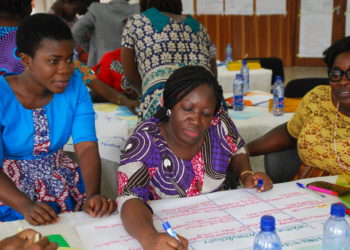Last month, the regular ‘Ask the Chef’s column asked the controversial question: How do we increase diversity in scholarly communications? The question arose from email discussions between the Chefs about how we could increase diversity of views, backgrounds and experiences in the Kitchen. As hoped, the post generated a lot of feedback and much of it highlighted the same issue that we had already identified: the current diversity gaps in Scholarly Kitchen Chefs.
I work for INASP, an NGO that works to support the production, sharing and use of research and knowledge in the Global South. As such, we have a wide network of partners across Africa, Asia and Latin America. I asked five of these partners the same question that the Chefs had answered: How do we increase diversity in scholarly communications?
The answers, shared below, give valuable perspectives on diversity of scholarly communication and on what is meant by the question itself, by providing responses about the diversity of the people involved but also about diversity of research output. None of the respondents are employees of INASP and all of the responses are their own words.

Dr Ismael Kimirei
Centre Director, Tanzania Fisheries Research Institute (TAFIRI)
Increasing diversity in scholarly communications depends on many factors. The most important of all among these is that you need to have something to communicate about before you even think about communicating anything, let alone scholarly communication. The means and tools necessary to make this happen include finances, which is at the heart of it all. You need data from which to derive the message, analytical tools to help you derive unwavering conclusions, and the abilities to craft a logically sound story that is enough to pull in not only the editors and reviewers, but also the readers. Of course, you need a solid foundation of well-thought ideas, sound theories, and hypotheses. I am sure there are many researchers in the Global South with good ideas and theories and who can contribute to bridge the currently growing divide. However, the distribution of wealth and so the funding for research is uneven.
We need to support these researchers financially and technologically. Collaborate with them as intellectual equals, and not as data collectors or logistics officers, which unfortunately is currently the case. Inclusive collaborations are important. Give them training opportunities. Include capacity building in your research budgets to train them and equip their laboratories. When you write papers, give them equal opportunity to actively participate in the writing process. Above all, involve them in the idea development process such that they will build their research and proposal writing muscles. Standing on giants’ shoulders is not hard, as long as it is consented! The significance of AuthorAID and INASP in empowering low and/or middle income countries’ (LMIC) researchers to become better communicators cannot be overemphasized; and may be the precursor to a more even scholarly communications platform. It can be, and must be done. Play your part!
Dr Zainab Yunusa-Kaltungo
Plastic Surgeon, part-time Lecturer and Hospital Administrator, Nigeria
Increasing diversity in scholarly publishing is a grand idea, and much like similar ideas as affirmative action, it’s easier said than done. Noble as the idea sounds, efforts geared towards the goal must, among other things, be mutually respectful and done without compromising standards. These standards must be scientific and incontrovertible, much like the Journal Publishing Practices and Standards (JPPS) framework aims at setting standards for Southern journals. This will potentially address the outcry associated with the large number of Southern journals that were included on Beall’s list.
The next step should be training on the fundamentals of research, particularly research ethics. Online blended learning/training courses being cheaper than formal classes makes it accessible to researchers from LMICs. I got an idea of the research knowledge gap in my region after I completed an AuthorAID online research writing course supposedly as a mid-career researcher, and the feedback from all I’ve introduced to the course since.
Creating platforms for mentoring and collaboration between Northern and Southern researchers holds the endless potential of rightly guiding the ‘underdogs’ of research, increase the quality and visibility of their work and ultimately achieve the aim of increasing diversity in scholarly publishing. A good platform to recruit Southern researchers would be inter-institutional collaboration.
The yawning gender gap in scholarly publishing in my region pervades all levels of academia and efforts at addressing the problem should focus on increasing school enrollment, nurturing and encouragement of the underserved to take up careers in academia and avail themselves of opportunities such as the Organization for Women in Science for the Developing World (OWSD).
In closing, as Stephen Covey’s second habit of highly effective people says, “begin with the end in mind”; when we set out to ‘increase diversity in scholarly publishing, what is the end we have in mind?
Ruth Velia Gómez
Director, National Centre for Farming Information and Documentation (CENIDA), Universidad Nacional Agraria, Nicaragua, and Coordinator, PERii-Nicaragua-CNU (Nicaragua’s national library consortium)
For countries in Central America, increasing the diversity in the communication of research continues to be a big challenge. There is a need to articulate acti ons and policies on a country level in order for the research generated in Honduras, El Salvador and Nicaragua to be visible to the world.
ons and policies on a country level in order for the research generated in Honduras, El Salvador and Nicaragua to be visible to the world.
With the support of INASP, we have taken important steps such as Central American Journals Online (CAMJOL) and in the case of Nicaragua we have created a virtual platform, which has the objective of promoting access to national, regional and international resources.
It is important to keep improving the quality of our journals, continuing to develop capacity in scientific writing, strengthening the Central American repository of SIIDCA-CSUCA, and promoting communities of practice where our researchers participate actively, carrying out regional events where key players (librarians, researchers and journal editors) articulate actions as countries and as a region. It is also key to develop marketing and advocacy plans so that the topic of research becomes a priority in each of the countries and the necessary resources are allocated to its development.
It is necessary to identify the most effective means to promote the research and the researchers from our countries. We need to identify the research topics in which we are strong and capitalize on these potentialities and share this knowledge worldwide.
Dr Barbara Burmen
Operations Research Coordinator,Senior Research Officer, Kenya Medical Research Institute/Center for Disease Control and Prevention Research and Public Health Collaboration
How much should we conform to uniform standards at the expense of diversity? How much should we promote diversity at the expense of comparability?
How do we learn to write? Is it through apprenticeship (learn what I do so that you can ultimately become me) or mentorship (let me show you how to do it so that you can do it yourself)? A colleague joked that as a first author you should be satisfied with the general idea of the paper and your position on the authors’ list in your first publication. Another said that he could hardly identify with any of the sentences that were finally printed in his first publication.
We ultimately write what we read, but how much diversity is there in our reading? While we attempt to read literature in similar settings to ours, in similar fields, by the same well-known scientists in our field, do we attempt to read journals that address cross-cutting issues, journals addressing our subject matter from different localities as well as from novice authors?
Should we publish in regional or international journals? Is our locally generated data with contextual solutions suitable for an international audience who may not be truly able to conceptualize it?
Similarly, should we restrict our medium of communication to English as opposed to other internationally-accepted languages when our research findings relate to persons who have no difficulties comprehending our national languages?
Should our data be shared in subject-specific journals or trans-disciplinary journals? In this era of wicked problems and trans-disciplinary science, how do we promote publishing and reading of multi-disciplinary cross-cutting journals?
Ultimately, are we limiting our diversity to our ratings for scientific scholarship by only publishing in English, in international (read high-impact) journals only as opposed to other forms of communication?
Dr Haseeb Md Irfanullah
Member of the Editorial Boards of ‘Bangladesh Journal of Plant Taxonomy’ and ‘The Journal of NOAMI’ and Programme Coordinator of IUCN Bangladesh
When we talk about diversity in systems made up of humans, we essentially talk about inclusion. We not only talk about balance between men and women in different activities, but also about people representing different sexual orientations, ethnicities, disabilities, and age groups. We promote and ensure diversity through motivation, policy implementation, in some cases through law enforcement.
The scholarly communications or journal publishing industry indeed runs with and for the enlightened people – the scholars, the researchers. By its own virtue, it is a closed system, where the authors, the editors, the reviewers, the readers, and often the publishers are researchers or academics. Another inherent feature of scholarly communication is internationally acceptable publishing standards.
Combining these two basic features, research communications is run by intellectually qualified people by certain rules. With all due respect to all, increasing diversity in a school’s governing body or a bank’s board of directors is therefore not the same as increasing diversity in an editorial board of a journal or in its author pool.
So how to increase diversity in a system which has set a bar to enter?
If we consider country or nationality as a means of measuring diversity, it could be done at three levels. First, increasing diversity in a research team can eventually lead into diversity in authorship of a piece of research communication. North-South and South-South collaborations in research projects are recognized and practiced modes of increasing diversity. Research funding agencies could play an important role here by promoting such diversity in the authorship of journal papers.
The second layer is increasing the number of countries from which papers originate and are published in a particular journal. In this case, however, encouraging quotas in favor of a particular country or a region to increase diversity will be wrong for a journal. A few years back, a Government of Bangladesh-funded journal started doing so well that it was only publishing papers by non-Bangladeshi authors. Some members of the editorial board argued that Bangladeshi papers should be given priority in each journal issue, even if processed very late, and each issue should contain a certain percentage of Bangladeshi papers.
I strongly argued that, if we want to attain international standards, we must think we are part of the global publishing ecosystem, not that of Bangladesh, and that proposition was not implemented. Since such a quota system is detrimental for journal publishing, instead, we should concentrate on improving the quality, the standard and the volume of our Southern research by working on the research system and communication of research outputs.
The last level deals with making the publishing ecosystem diverse. We can get there by improving and maintaining standards of Southern journals. Organizations and networks, like INASP, Research4Life or Editage can help. Large publishing houses can help as well by improving editorial systems and building editors’ and authors’ capacities.
Journal publishing is a serious business for its own sake. But if we borrow tools from other sectors, scholarly communications could be an exciting place to be in. Making scientific conferences participatory with games and interactive activities, being creative in showcasing research impacts using multiple communication channels or becoming story-tellers while communicating with wider audiences – all could increase diverse participation in research communication. Who said scholarly communication cannot be fun!
Discussion
6 Thoughts on "Tackling Diversity in Scholarly Communications – Part 2"
Thanks for convening this excellent panel of experts, Sian — great responses, and much food for thought.
Thanks to all brains behind this project and discussion. I think learning to do a research is still a less priority in the LMIC because of competing demands on available resources. Practically funding for good research comes from outside.
Hi Sian
This was inspiring – thank you.
By the way – what does INASP mean – is it an acronym?
Thank you Ann. INASP started out as an acronym but, in common with many other organizations, we outgrew the scope of the acronym so it is now our name. It originally stood for International Network for the Availability of Scientific Publications, which is still part of what we do but doesn’t describe, for example, the AuthorAID network providing research writing support, our work helping government agencies understand their capacity for using evidence or the work addressing gender inequality that I wrote about last month.
The underline assumption in this topic and discussion seems to suggest that Diversity = Credibility, High Quality and Inclusion. In which case, that is not entirely correct. I have seen cases where diversity creates more confusion, leading to audiences or consumers being dazzled by the menu of choices such that they end up resorting to what they know or what appeals to their intuitions. This is worsened by the fact that scholars often contradict each other and without an intermediary or a filter, audiences or consumers can choose stuff that doesn’t help them (what they want instead of what they really need). We need to be alert to the pros and cons of diversity. It should just be diversity for its own sake. Knowledge life cycles also merit consideration. For instance, scientific knowledge has a much more deeper history in the Western World than in developing countries and that influences levels of rigor and the broadness of scientific experiences. The moment you are swayed by affirmative action issues like trying to accommodate authors on the basis of where they come from and their skin colour, you risk watering down knowledge.
May I offer another great blog post on the background to this topic from another employee at INASP, Andy Nobes: http://journalologik.uk/?p=149
I felt this perfectly describes why timings are different and the challenges of conforming LMIC outputs to the HIC way of doing things. It’s a bit long, but will certainly enlighten the reader



